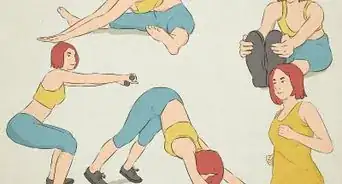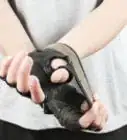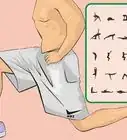This article was co-authored by Julian Arana, M.S.eD., NCSF-CPT. Julian Arana is a Personal Trainer and the Founder of B-Fit Training Studios, a personal training and wellness set of studios based in Miami, Florida. Julian has over 12 years of personal training and coaching experience. He is a certified personal trainer (CPT) by the National Council on Strength and Fitness (NCSF). He has a BS in Exercise Physiology from Florida International University and an MS in Exercise Physiology specializing in strength and conditioning from the University of Miami.
There are 27 references cited in this article, which can be found at the bottom of the page.
wikiHow marks an article as reader-approved once it receives enough positive feedback. In this case, 89% of readers who voted found the article helpful, earning it our reader-approved status.
This article has been viewed 211,953 times.
For a lot of people, having a lean, sculpted physique ranks pretty high on the list of goals that seem unattainable. Losing weight and building lean muscle are commitments that require a tremendous amount of time, energy and expense, right? Not necessarily. The truth is that there are ways to help your body get rid of the excess weight it’s been holding onto in a relatively short amount of time. All it requires is a little discipline and some practical knowledge of how the body burns fat. By increasing your physical activity, cutting fattening foods out of your diet and making a few small adjustments to your lifestyle, you can maximize your fat-burning potential and finally achieve the ripped body you've always wanted.
Steps
Exercising to Burn Fat
-
1Work out your muscles. Lift weights or perform another type of intense resistance training 3-4 times a week. If you have access to a gym, start with a traditional bodybuilding split (targeting 2-3 muscles groups per session) so that at the end of the week you’ve hit every major muscle group; if you’re working out at home, bodyweight exercises such as push ups, pull ups, air squats and crunches will do just fine. It may seem counterintuitive, but training the muscles actually burns more calories in the long run than spending hours on the treadmill.[1]
- Give attention to all of the important muscle groups (legs, back, core, chest, shoulders, arms, etc.) rather than just emphasizing showy muscles like the abs and biceps. Exercises like squats, lunges, rows, dips and shoulder presses that call for a high level of coordination are all excellent for building muscle in different parts of the body.
- The body constantly uses up calories to maintain muscle tissue, even in a resting state. The more muscle mass you have, the more calories you’ll be burning at a given time.[2]
-
2Focus on strength. Use a strength-based approach to program your weight training sessions, performing 4-5 sets of each exercise, with around 5-10 repetitions in each set. Since you’ll be in a reduced calorie state from dieting, too much volume in the gym can actually break down muscle without receiving enough nutrients to repair it. Keeping your volume in check while building and maintaining quality muscle mass is all about shifting your focus from endurance to strength.
- Your weight training sessions should be relatively brief (no more than about an hour) and emphasize the major compound lifts (squats, deadlifts and benchpress).[3]
- Take 2-3 days off per week to rest and give your body a chance to recover.
Advertisement -
3Pay attention to your core. Dedicate part of each workout to strengthening and building your core muscles. This could make up the last fifteen minutes of your weight training sessions, or you could add one or two dedicated core sessions each week. These core workouts should be comprised of ab-focused exercises such as weighted sit ups, crunches, leg lifts, planches and suitcase carries. For most people, a ripped physique is synonymous with rippling obliques and a chiseled, defined six-pack. The more your train the muscles of the mid and lower abdomen, the more prominent they will be once you begin to lean out.[4]
- You will also receive some residual core work from the compound lifts you're performing to develop your strength and muscle mass (particularly squats and deadlifts).[5]
- Localized core training will make the ab muscles more noticeable, but to really start looking ripped you should be certain that you're working out your entire body, getting a few hours of cardiovascular training each week and sticking to a reduced-calorie diet. 80% of achieving a lean physique lies in nutrition.
EXPERT TIPJulian Arana is a Personal Trainer and the Founder of B-Fit Training Studios, a personal training and wellness set of studios based in Miami, Florida. Julian has over 12 years of personal training and coaching experience. He is a certified personal trainer (CPT) by the National Council on Strength and Fitness (NCSF). He has a BS in Exercise Physiology from Florida International University and an MS in Exercise Physiology specializing in strength and conditioning from the University of Miami.Certified Personal Trainer
 Julian Arana, M.S.eD., NCSF-CPT
Julian Arana, M.S.eD., NCSF-CPT
Certified Personal TrainerOur Expert Agrees: If you're trying to strengthen your core, try ab exercises like hanging knee raises, deadbugs, and cable-weighted cable crunches. However, when it comes to having visible abs, the goal is to get leaner by following a balanced diet and eating at a caloric deficit.
-
4Do regular cardiovascular exercise. In addition to weight training, get in a few hours of steady-state cardio every week. This can include jogging, swimming, cycling, rowing, kickboxing or even simply walking. While resistance training creates a lasting calorie burning effect at rest, cardiovascular training gets you into a consistent fat-burning rhythm. Done together, the two will display great results in no time.[6]
- Keep your heart rate elevated, but don’t torture yourself. It’s more important to find a pace and intensity that you can keep up for the duration of the workout.
- Finish your weight training workouts with an hour of cardio. You will have already used up the glycogen in your muscles while lifting weights, so your body will go straight to its fat stores for energy.[7]
- Experiment with doing cardio in a fasted state (when you’ve had nothing to eat). For example, go on a short jog first thing in the morning before you eat breakfast. Keep the intensity and length of the workout moderate. Again, with no muscle glycogen to draw from for fuel, you’ll burn pure fat while you exert yourself.[8]
-
5Push yourself with metabolically challenging workouts. A couple times a week, set aside time for a quick Tabata or HIIT (High Intensity Interval Training) session. These workouts don’t take long, but are extremely taxing, and can make a big impact on your fat stores. HIIT and other difficult programming methods are known to be metabolically dense, meaning they rev up the mechanisms that burn fat for energy and melt the pounds right off. HIIT programs and similar exercise methods are usually offered at fitness centers in the form of group classes.[9]
- Tabata-style workouts are done by performing an exercise for 20 seconds, then taking 10 seconds rest. Repeat this sequence 8 times. The entire workout only takes 4 minutes, but you get a ton of bang for your buck.[10]
- Apps like Tabata Timer and Tabata Stopwatch Pro make it easy to keep track of your activity and rest intervals using your smartphone.[11]
- HIIT training involves exercising with a high pace or intensity for a preselected period of time (an “interval”), then dropping the intensity for a short interval before ramping it back up again. [12]
Leaning Out with Proper Nutrition
-
1Lower your calorie intake. Keep your diet in check to make sure that you’re not consuming more calories than you’re burning. The simplest and most effective way to do this is to record the approximate number of calories you take in with each meal. When trying to shed fat, it’s best to reduce your daily calories as much as possible while receiving all the necessary nutrients and preserving lean muscle. As long as your net calorie loss through exercise is greater than your intake through eating, you’ll continue to get leaner.
- The number of calories you should be eating will vary person to person, and depends largely on your bodyweight and composition (people with more muscle mass need more calories to maintain it), activity level and other factors.
- Talk to your doctor or a nutritionist if you decide to put yourself on a reduced-calorie diet. An expert will be able to tell you exactly how many calories you'll need to maintain a healthy body composition for your size, age and activity level. They can also provide you with helpful recommendations for food and supplementation.[13]
- Use a nutrition app (such as My Fitness Pal, My Diet Coach or Lose It!) or an old-fashioned journal to record the number of calories you consume on a daily, weekly or monthly basis to make sure you're on track to meet your goals.[14]
-
2Eat high protein, low fat foods. Reconfigure your personal food pyramid so that foods that are rich in protein comprise a bigger part of your diet. At the same time, drastically cut down on greasy, high-fat foods, or eliminate them altogether. High-fat foods are richer with calories, meaning it won’t take much of them to sabotage your nutrition plan. Lean, protein-packed foods, however, contain few calories on average. Their protein content will help you build valuable, calorie-incinerating muscle mass, as well as keep you feeling full longer.[15]
- Get your protein from sources like lean meats, eggs, beans, tofu, nuts, etc. Stay away from fried foods, chips and other snack foods.
- A good general guideline is to get at least 1 gram of protein for every 2 pounds of your bodyweight: if you weight 150lbs, for instance, you should aim for around 75g of protein a day.[16]
- Supplementing with protein bars or shakes can help you meet your daily protein needs without requiring you to eat every couple of hours.
-
3Choose natural, whole food options. Ditch the fast food, TV dinners and other processed junk and stick to fresh, natural foods. Whole grains, green leafy vegetables, raw nuts and fresh fruit should all be staples of your overhauled diet. They’re full of the macronutrients your body craves and uses to build a ripped, strong physique. They’re also devoid of chemical preservatives and other unknowns which can make it hard for your body to digest and break down food for energy.[17]
- Organic foods can be a little more expensive, but they’re worth the benefits they offer you. Each meal will leave you feeling satisfied.
- Do your shopping and meal preparation in advance. That way you’ll know exactly what’s in the food you eat—you’ll be better able to keep track of calories and other nutrients, and having food on hand when you get hungry will keep you from seeking out unhealthy options.[18]
-
4Limit sweets. Now is the time to give up candy, donuts and other tempting confections. Nothing stalls fat-burning progress faster than sugar-laden foods. While sugar is useful for provided instant, short-term energy, most of it ends up stored as fatty tissue if it’s not used for fuel immediately. For best results, keep your sugar intake down to or below about 50g per day.[19] If you must have something sweet, opt for a ripe banana, a handful of wild berries or a filling snack like Greek yogurt with a drizzle of raw honey.[20]
- Be careful with the amount of bottled juices and even fresh fruit you consume. While it’s better to get your sugar from natural sources, it can add up after a while.
- Examine food packaging closely at the supermarket. Even non-dessert foods are often saturated with sugar.
Keeping Your Body Running Efficiently
-
1Get plenty of rest. Aim to get 7-8 hours of sleep per night whenever possible. Your body repairs itself and builds new tissue while at rest. This is when the muscle mass you’ve been working so hard to pack on will begin developing. A good night’s sleep will also help you recover from fatigue, injury and soreness, and leave you feeling refreshed and ready for your next workout.[21]
- Turn off the TV, stereo, phone, tablet and any other electronic distractions when you go to bed to ensure that you fall into a deep, restful sleep.[22]
- If you have trouble getting enough uninterrupted sleep at night, try taking a nap for 20-30 minutes in the afternoon or whenever you have time.
-
2Stay hydrated. Drink plenty of water throughout the day, especially during intense exercise to replenish what is lost through perspiration. Every cell in your body contains water, so needless to say it’s vital for proper growth and function. You’ll feel more energetic when you’re adequately hydrated, and water can even help curb your appetite when you start getting cravings for unhealthy foods.
- Water should replace sodas, sports drinks, alcohol and other beverages that are filled with carbohydrates from sugar.
- As a general rule, you should drink when you feel thirsty. Try to get at least ½ to ¾ of a gallon of water per day. When you use the restroom, your urine should be very light in color or clear.[23]
-
3Drink black coffee and green tea. Put on a pot of coffee when you first wake up, or unwind at night with a steaming mug of organic green tea. Coffee beans and tea leaves are renowned for their antioxidant properties, which reduce inflammation in the body, fighting age-related illness and obesity. The caffeine and other components of tea and coffee have even been observed to have a slight thermogenic effect, meaning that sipping them can actually help you destroy fat cells.[24]
- Leave the cream and sugar out of your coffee and/or tea. This just adds unneeded calories.
-
4Try intermittent fasting. We’re often told that in order to lose weight, we should eat smaller meals more frequently throughout the day. In reality, this just makes it more likely for calories to stack up and exceed your daily limit. As an alternative, try fasting for 8-10 hours at a time 1 or 2 days a week. Fasting periodically works to suppress your appetite and reset your body’s natural hormone levels. Plus, since you aren’t eating, you’ll be burning calories all that time, giving you an advantage when it comes to staying in a caloric deficit.[25]
- To begin intermittent fasting, simply have breakfast as usual, then don’t eat again for 8-10 hours. Alternately, you can begin fasting as soon as you wake up, eating your first meal around mid-afternoon or early evening.
- Fasting is perfectly safe, as long as it doesn’t turn into starvation. Make sure you eat at least one substantial meal on fasting days to break the fast. High-protein, moderate-fat and carbohydrate meals are perfect for this purpose.[26]
- Sit down with a physician or nutritionist before experimenting with intermittent fasting. Discuss which nutrient timing schedules and frequencies would be most advantageous for you. Fasting may not be a beneficial practice for everyone, especially those with hormone or metabolic disorders.[27]
Community Q&A
-
QuestionWhat happens if you train the same muscle every other day?
 Community AnswerThat is a good way to train. Just make sure you allow each muscle group time to rest.
Community AnswerThat is a good way to train. Just make sure you allow each muscle group time to rest. -
QuestionIf I am bulky, how can I become ripped? What will be the weekly schedule?
 Community AnswerGetting ripped is not difficult if you do it the right way. Avoiding food for the name of dieting is the biggest myth; the only way to lose fat is to burn calories and boost your metabolism. Eat right, be right. You can reduce your calorie intake slowly, then follow these steps: drink plenty of water, avoid simple carbs, increase protein and fat intake to 70% of diet fat(good fat), use spices(especially chilies), and cut down sugar and salt. Most important is these will work at best when you are doing strength training and cardio combinations.
Community AnswerGetting ripped is not difficult if you do it the right way. Avoiding food for the name of dieting is the biggest myth; the only way to lose fat is to burn calories and boost your metabolism. Eat right, be right. You can reduce your calorie intake slowly, then follow these steps: drink plenty of water, avoid simple carbs, increase protein and fat intake to 70% of diet fat(good fat), use spices(especially chilies), and cut down sugar and salt. Most important is these will work at best when you are doing strength training and cardio combinations. -
QuestionShould I exercise while on the fasting schedule?
 CDG ballerCommunity AnswerYou can, but not as much. Exercising will have less effect because you have no protein intake, and it might make you more tired than usual.
CDG ballerCommunity AnswerYou can, but not as much. Exercising will have less effect because you have no protein intake, and it might make you more tired than usual.
Warnings
- Getting ripped is a common and achievable goal, but it will be easier for some people than others. If you tend to carry more weight or have a naturally stocky physique, leaning out can become an ongoing process. In addition, you might find that your energy levels decrease once you get below your natural body composition level.⧼thumbs_response⧽
- Rest is an essential part reaping the benefits of exercise. Never work out more than six days in a row without taking a day off.⧼thumbs_response⧽
- Avoid fat burners and other supplements that claim they can help you lose weight. Not only are most of these products untested, they can have an adverse effect on your health by causing overstimulation and forcing chemical changes to your metabolism. Be aware of what you're putting in your body and how it will respond to it.⧼thumbs_response⧽
- Intermittent fasting and fasted cardio can be useful tools to help you shed some unwanted weight, but they can be dangerous if taken to the extreme. Never go longer than about 12 hours without eating, and don't push yourself too hard when you're on an empty stomach. Your body needs food to function.⧼thumbs_response⧽
- Make sure you're in good enough physical condition to perform demanding high-intensity workouts such as Tabata or HIIT.⧼thumbs_response⧽
References
- ↑ http://www.bodybuilding.com/content/build-muscle-and-lose-fat-simultaneously.html
- ↑ http://www.mayoclinic.org/healthy-lifestyle/weight-loss/in-depth/metabolism/art-20046508
- ↑ https://www.t-nation.com/training/8-rules-for-fat-loss-training
- ↑ http://www.bodybuilding.com/content/beginner-core-training-guide.html
- ↑ http://www.bodybuilding.com/fun/core-strength-your-ultimate-guide-to-core-training.html
- ↑ http://zenhabits.net/17-tips-to-help-you-get-lean-and-fit/
- ↑ http://www.bodybuilding.com/fun/ask-the-ripped-dude-cardio-before-or-after-weights.html
- ↑ http://www.muscleforlife.com/fasted-cardio/
- ↑ http://www.mensfitness.com/training/lose-weight/how-to-get-lean-25-ways-to-lose-fat-faster
- ↑ http://greatist.com/fitness/four-minute-workout-tabata-training-effective
- ↑ http://www.iphoneness.com/iphone-apps/tabata-apps/
- ↑ http://www.bodybuilding.com/content/high-intensity-interval-training-the-ultimate-guide.html
- ↑ http://www.webmd.com/diet/obesity/features/how-talk-your-doctor-about-your-diet
- ↑ http://www.tomsguide.com/us/pictures-story/710-best-diet-nutrition-apps.html#s12
- ↑ https://breakingmuscle.com/nutrition/the-right-way-to-lose-fat-what-to-eat
- ↑ https://breakingmuscle.com/nutrition/how-much-protein-do-you-need-science-weighs-in
- ↑ http://www.webmd.com/food-recipes/features/the-whole-foods-diet#1
- ↑ http://www.eatsandexercisebyamber.com/home/meal-prep-for-beginners
- ↑ http://www.marksdailyapple.com/how-much-sugar-is-recommended-per-day/
- ↑ http://www.forbes.com/sites/alicegwalton/2015/04/24/exercise-wont-save-us-sugar-and-carbs-are-our-bodily-downfall/
- ↑ http://www.shape.com/lifestyle/mind-and-body/why-sleep-no-1-most-important-thing-better-body
- ↑ https://medlineplus.gov/magazine/issues/summer12/articles/summer12pg20.html
- ↑ http://www.mayoclinic.org/healthy-lifestyle/nutrition-and-healthy-eating/in-depth/water/art-20044256
- ↑ http://www.active.com/nutrition/articles/4-foods-that-burn-belly-fat
- ↑ https://www.healthline.com/nutrition/intermittent-fasting-guide
- ↑ http://www.scientificamerican.com/article/how-intermittent-fasting-might-help-you-live-longer-healthier-life/
- ↑ http://www.cnn.com/2016/06/08/health/intermittent-fasting-healthy/
About This Article
To get ripped fast, do strength training exercises that target your different muscle groups 3-4 times a week. For example, you can do weightlifting exercises like squats, deadlifts, and bench presses. If you don't have access to weights, you can do exercises like push-ups and crunches at home. Additionally, add a few hours of cardio to your routine every week, like jogging or even a brisk walk. To help you build more muscle mass, eat high-protein, low-fat foods, like chicken or tofu, and low-calorie, whole-food snacks, like fruit. For tips on getting ripped by eating better and leading a healthy lifestyle, read on!

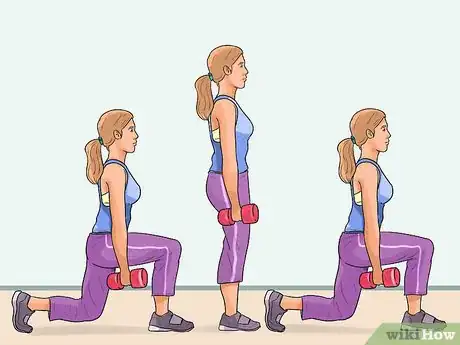
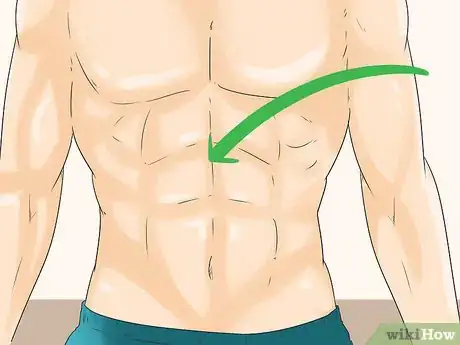
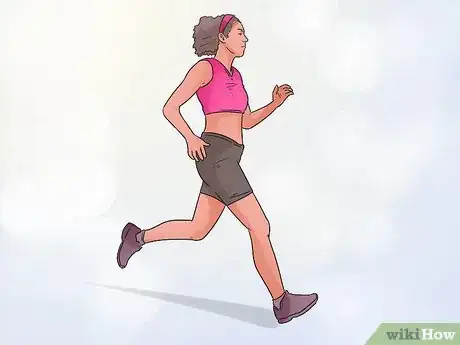




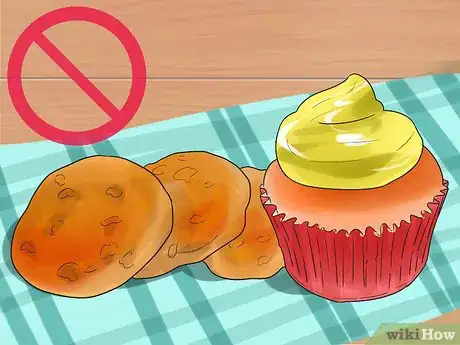

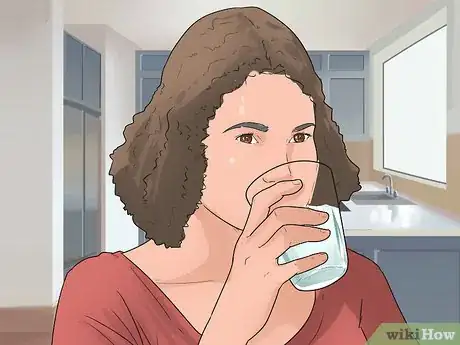
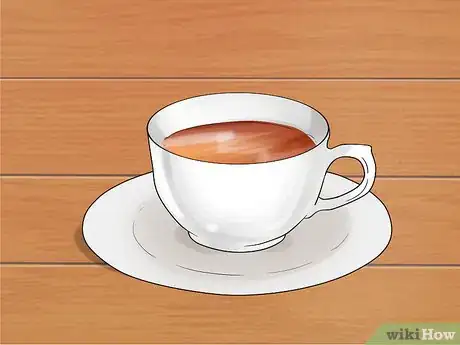
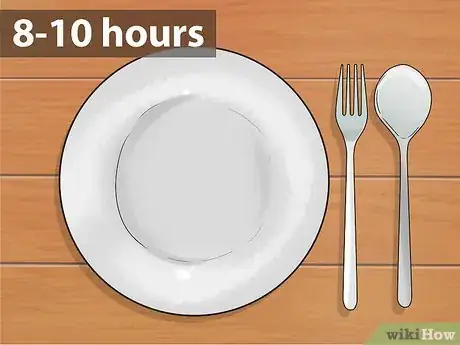


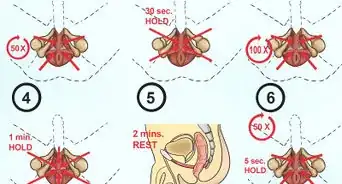

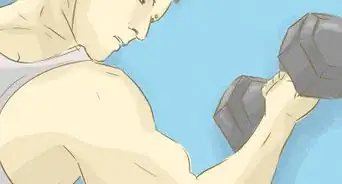

-Step-24.webp)
